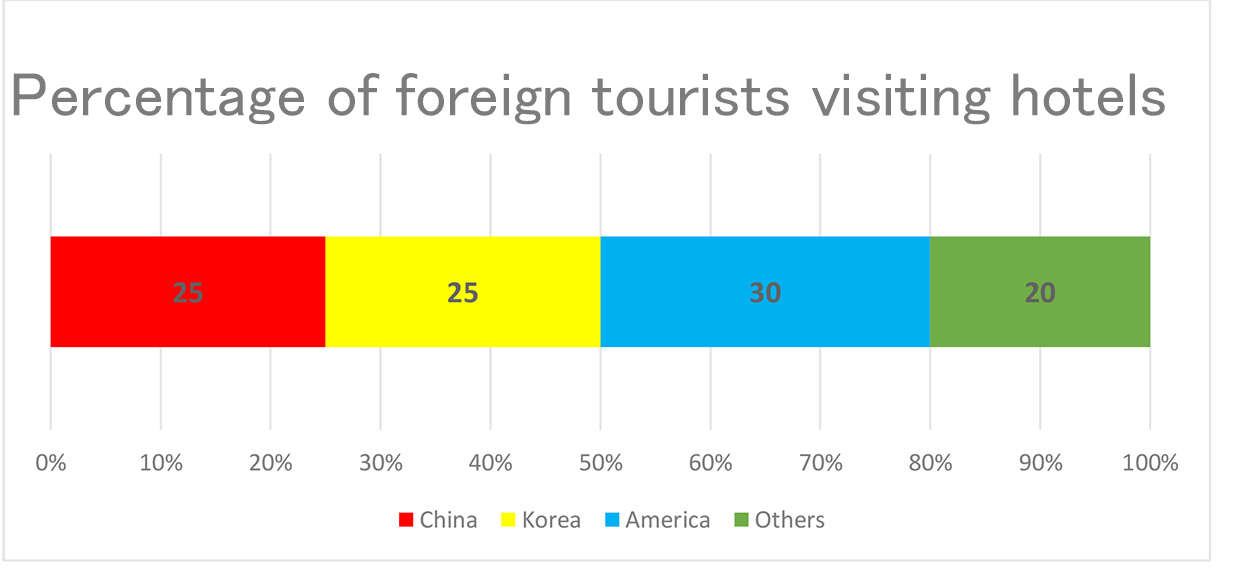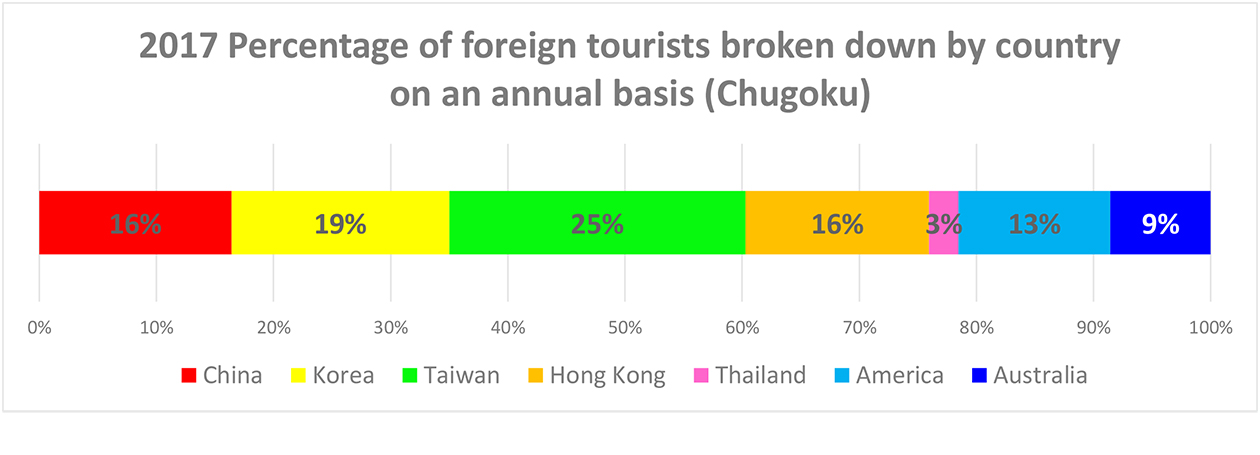Chugoku Region
In Chugoku Region, the demand for “inbound” is high not only by air but also by cruise ships from countries such as China and Korea. The existence of developed cities such as Shimonoseki and Sakai, which have been prospered as trading posts for a long time can be the reason. There are many sightseeing spots in Chugoku Region including numerous historical heritage sites. However, those numbers are strongly biased toward Hiroshima. Despite of anchoring in ports of Yamaguchi or Tottori, why aren’t they visiting those places?

This may have something to do with Sanyo bullet train railway line or the worldwide popularity of Hiroshima. However, it is true that other prefectures also want to increase the number of foreign tourists. Therefore, the Ministry of Land Infrastructure, Transport and Tourism is executing a branding strategy for Chugoku Region to achieve differentiation from others.
The chart which shows the number of Inbound tourists to Japan indicates that the number of westerners such as French and Australian people is extremely high in Chugoku RegionZ. So, Chugoku Region, as a whole, is focusing on the historical heritage sites since western tourists are interested in Japanese history and culture. Moreover, Sanin area in Chugoku Region, which is a place with rich nature, is developing plans such as attracting overseas tourists to its ski resorts and embracing Gateway Strategy, which shifts domestic airports to international ones.
Furthermore, the websites, which represent the characteristic of today, are made to stand at non-Japanese eye-levels. Five prefectures in Chugoku Region are supporting and cooperating with each other to achieve a goal which targets 3.2 million overnight visitors by 2020.

Shikoku Region
Shikoku Region, located away from the main island, is not really a free-to-access place for tourists. Therefore, not to mention Honshu-Shikoku Bridge or the cruise ships, the metropolitan cooperative strategy utilizing aircrafts is also carried out. The metropolitan cooperative strategy makes overseas tourists transit from successful airports such as Narita and Kansai airports to those in Shikoku Region such as Takamatsu or Matsuyama airports via domestic flights, which is implemented in various places. Shikoku not only covers the transportation side, but also tourism resources.
One typical example of it is Shikoku-Henro, which is a multi-site pilgrimage of 88 temples associated with the Buddhist monk Kūkai in Shikoku. Although there was no pilgrim in 2004, the number reached greater than 300 in 2017, having increased for the last several years. This phenomenon may be led by the advertisements of its nature, temples and shrines on the Internet including websites. As pilgrimage is getting popular overseas, the advertisements in English might have helped Shikoku-Henro to be spread as well as the attractive chance to see the unique culture of Japanese temples. As mentioned above, Shikoku values its nature and culture. It attracts tourists from all over the world by introducing its charms through the Internet.
Although the number of tourists to Shikoku decreased last year because of the typhoons, Shikoku is setting up various strategies by making a strong effort to gain repeat customers and to achieve “1.25 million overnight visitors including overseas tourists” in 2020. There were couples from overseas who had a wedding ceremony in a temple after the pilgrimage. The demand for “Inbound” is increasing in Shikoku.
We asked the people in Hiroshima the following questions!
At a hotel in Hiroshima
Q: How many “Inbound” tourists stay in this hotel annually?
Approximately 2,100.
Q: Where are they from?
A.

A: We are strengthening our business activities towards travel agencies.

We asked the people in Okayama the following questions!
At a mall in Kurashiki city
Q: How many overseas tourists visit here a year?
A: Between 10,000 and 20,000 people.
Q: Where are they from?
A: Most tourists used to come from China before, however, we have overseas tourists from all over the world these days. Most of them are from developed countries such as the US, France, and China. There are also tourists from Portugal or South American countries such as Argentina.
Q: What efforts do you make for accepting “Inbound” tourists?
A: Since many of our male staffs can speak English, we ask them to handle the cash registers to assist the overseas visitors. Since most things are only written in Japanese besides our signboard, we are planning to develop products written in other languages for “Inbound” tourists.



